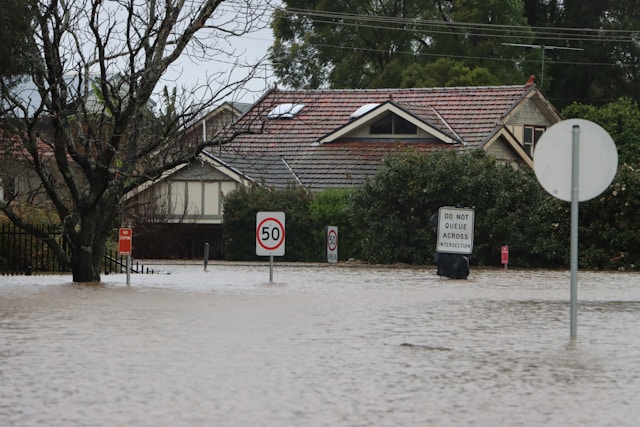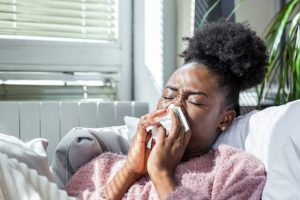
When floodwaters invade a home, the immediate concern is often property damage — soaked carpets, ruined furniture, or weakened walls. But long after the water is pumped out, hidden dangers can remain. Flooding creates the perfect conditions for mould, bacteria, and other hazards that can have serious health consequences if not addressed properly.
As extreme weather events become more common, families are facing these risks more often. According to the Insurance Council of Australia, water-related disasters have cost billions in recent years, and the true toll often extends beyond financial loss. The real danger lies in the lingering health impacts.
Water damage health risks go beyond property
Flooding isn’t just about wet floors. When water seeps into walls, flooring, and insulation, it creates a breeding ground for microorganisms that threaten indoor air quality.
The most common health risks after flooding include:
- Respiratory problems: Damp conditions promote mould growth, releasing spores that can trigger asthma, allergies, and chronic breathing difficulties.
- Infections: Floodwaters often carry bacteria, parasites, and chemicals. Even clean water flooding can become contaminated if left untreated for more than 48 hours.
- Skin irritation: Prolonged exposure to damp or mouldy environments can cause rashes and infections.
- Toxic effects: Certain moulds, like Stachybotrys chartarum (black mould), can produce mycotoxins that contribute to headaches, fatigue, and neurological symptoms.
The Centers for Disease Control and Prevention (CDC) warns that mould exposure is particularly dangerous for children, the elderly, and people with weakened immune systems. Safe restoration is not just about protecting property — it’s about protecting lives.
Why safe mould removal is essential
Mould is one of the most significant threats in post-flood environments. It can begin growing within 24–48 hours and spread quickly through spores that travel in the air.
Attempting DIY mould removal may seem like a quick fix, but it often makes the problem worse by disturbing spores and releasing them into the air. Proper remediation requires:
- Containment to prevent spores from spreading.
- Removal of contaminated materials that can’t be salvaged.
- Use of antimicrobial treatments to stop regrowth.
- HEPA-grade filtration to clean the air of harmful particles.
The World Health Organization emphasises that indoor air quality is a major public health concern, with mould being a key contributor. Safe mould removal must be performed by trained professionals to ensure both effectiveness and safety.
Clean water flooding still carries risks
Not all floods are the same. A burst pipe or appliance leak may involve clean water at first — but if it isn’t dealt with quickly, even “Category 1” clean water can turn hazardous.
Within hours, clean water can soak into building materials, picking up dust, microbes, and chemicals. Within two days, it can shift into “Category 2” (grey water), creating risks of infection and illness. By day three, it can escalate to “Category 3” (black water), carrying serious contamination.
This is why rapid response matters. The longer water sits, the greater the risk to both the building and its occupants.
Proper restoration protects health and home
Professional restoration companies do more than dry carpets. They use advanced tools and strict safety standards to ensure a property is not only visually restored, but also safe to live in.
A health-focused restoration process includes:
- Moisture mapping and monitoring with specialised meters to detect hidden dampness.
- Industrial drying equipment to restore safe humidity levels.
- Safe mould removal procedures aligned with IICRC standards.
- Air purification to eliminate lingering contaminants.
- Detailed reporting to confirm when a home is safe for re-occupancy.
This combination of technology and expertise ensures families aren’t unknowingly exposed to hidden dangers after a flood.
Reztor Restoration: a health-conscious restorer
In an industry where speed and cost often take centre stage, health-conscious restoration companies are setting new benchmarks. Reztor Restoration operates across Queensland, New South Wales, and Victoria, with a strong focus on protecting the wellbeing of clients as well as their homes.
Reztor’s IICRC-certified technicians follow strict health and safety protocols, using tools such as thermal imaging cameras, moisture meters, and HEPA-grade air scrubbers to identify and eliminate risks. Their 24/7 emergency response ensures that even clean water flooding is managed before it becomes a hazard.
What sets Reztor apart is their commitment to safe mould removal, health-focused drying strategies, and transparent reporting. Families can be confident their homes aren’t just dry — they’re safe.
The bottom line
Flooding can happen suddenly, but its health impacts can last for months or years if restoration isn’t handled properly. From mould spores to bacterial contamination, the risks of water damage go far beyond property loss.
By recognising the dangers, acting quickly, and engaging professional restorers, homeowners can protect both their health and their investment. Companies like Reztor Restoration prove that proper restoration isn’t just about rebuilding houses — it’s about safeguarding lives.
About the author
Matthew Brunes is the Director of Reztor Restoration, a leading disaster restoration company in Australia. With IICRC-certified teams operating across Queensland, New South Wales, and Victoria, Reztor specialises in flood recovery, safe mould removal, and water damage restoration. Matthew is passionate about raising awareness of the hidden health risks associated with flooding and ensuring families live in safe, healthy homes.





